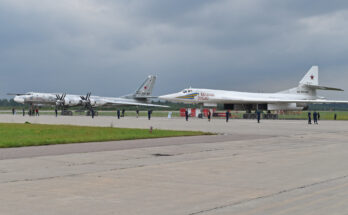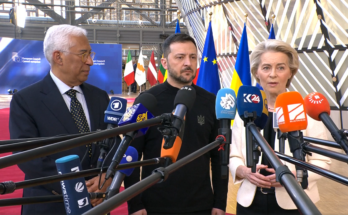by Dan Darling, International Military Markets Analyst, Forecast International.
On March 31, Polish Minister of Defense Antoni Macierewicz announced the submission of a revised request for information (RFI) to the U.S. government concerning the potential buy of eight Raytheon-produced Patriot air-and-missile defense batteries to fulfill the Wisla program requirement.
The Wisla program is part of the larger “Shield of Poland” effort to replace the armed forces’ outdated, Soviet-legacy missile defense systems with newer air and missile defense (AMD) systems. It aims to fill the medium-range element of what is to be a three-layered system.
The program has gone back and forth since it was first outlined. Back in April 2015, the former Civic Platform government announced the selection of Raytheon’s Patriot, and a planned purchase of eight Patriot batteries via the U.S. government-to-government Foreign Military Sales (FMS) channel. The first two batteries were to arrive within three years of a contract signing, with the remainder following through 2025.
But with the election of a new government that November, this selection was reconsidered.
Upon coming into office, the new conservative Law and Justice (PiS) party government began a review of all major defense contracts. Defense Minister Macierewicz noted that shifting conditions in the potential Wisla contract had emerged, including a higher overall price tag and longer delivery timelines. Another major consideration involved localized workshare, particularly with an eye on bolstering the domestic defense industry and improving Polish technological know-how.
Under the latest Wisla outline, the first two batteries are to be delivered within two years of inking a contract. With Macierewicz’s goal of concluding a contract prior to year-end 2017, initial deliveries would start by the close of 2019 – a remarkably short timeframe.
Further Polish demands add even more hurdles to a potential contract signing. These include a price cap of PLN30 billion ($7.5 billion), a special waiver allowing Poland to acquire Northrop Grumman’s still-to-be-delivered Integrated Battle Command System (IBCS) in parallel with the U.S. Army, and a 360-degree radar for the final six of the eight Patriot batteries – a radar that Patriot currently does not have. Following full delivery, the initial two Patriot batteries (which would arrive in 3+ configuration) would be retrofitted with the 360-degree Gallium Nitride-based radar, which is suffering from uncertain in-service dates for the U.S. Army and, thus, would threaten Poland’s system operational timelines.
Another wrinkle in the Polish request relates to the missiles for the Patriot batteries. Poland wishes to bypass the Raytheon Guidance Enhanced Missile-Tactical (GEM-T) interceptor in favor of the lower-cost SkyCeptor missile, plus a small number of the Patriot Advanced Capability-3 Missile Segment Enhanced (PAC-3 MSE) missiles. And, it wants these SkyCeptors to be produced locally in cooperation with Raytheon.
To top all this off, the Polish government is demanding that 50 percent of all workshare related to the acquisition – including manufacture of the Patriot batteries – be done by its local defense industry.
Should a U.S. FMS package meet all the Polish government requirements – a huge “if” – then Poland appears eager to move ahead with a deal. However, with so many hurdles to clear, other bidders for Wisla – including Lockheed Martin offering up its Medium Extended Air Defense System (MEADS) – should bide their time and keep their lines of communication with Warsaw open.
Please feel free to use this content with Forecast International and analyst attributions, along with a link to the article. Contact Ray Peterson at +1 (203) 426-0800 or via email at ray.peterson@forecast1.com for additional analysis.
 The Forecast International International Military Markets series examines the military capabilities, equipment requirements, and force structures inventories of 140 countries, with corresponding coverage of the political and economic trends shaping the defense market outlook for individual countries and regions.
The Forecast International International Military Markets series examines the military capabilities, equipment requirements, and force structures inventories of 140 countries, with corresponding coverage of the political and economic trends shaping the defense market outlook for individual countries and regions.
For 50 years, Forecast International intelligence reports have been the aerospace and defense industry standard for accurate research, analysis, and projections. Our experienced analysts compile, evaluate, and present accurate data for decision makers. FI's market research reports offer concise analysis of individual programs and identify market opportunities. Each report includes a program overview, detailed statistics, recent developments and a competitive analysis, culminating in production forecasts spanning 10 or 15 years. Let our market intelligence reports be a key part of reducing uncertainties and mastering your specific market and its growth potential. Find out more at www.forecastinternational.com



